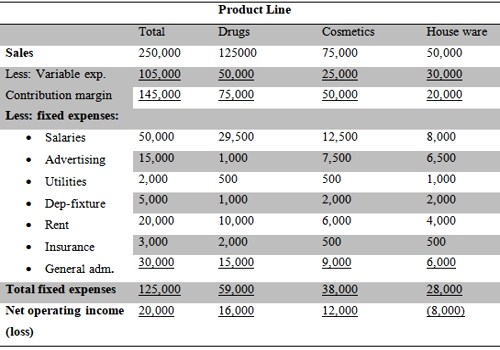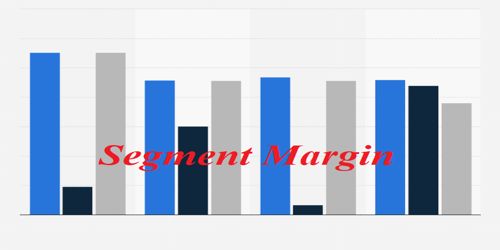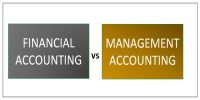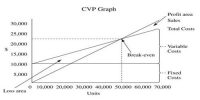Segment Margin in Product Line
Segment margin is the difference between the revenue of a segment and the direct costs of the segment represents the amount of income that has been earned by the particular segment. It is the amount of net profit or net loss generated by a portion of a business.
Segment margin in product line: Decision relating to whether old product lines or other segments of a company should be dropped and new ones added are among the most difficult that a manager has to make. In such a decision, many qualitative and quantitative factors must be considered. Ultimately, however, any financial decision to drop an old segment or to add a new one going to hinge primarily on the impact the decision will have on net operating income. To assess this impact, a cost must be carefully analyzed.
In illustration of cost analysis: Consider the three major product line of the Discount drug company – drugs, cosmetics, and warehouses. Sales and cost information for the preceding month for each separate product line and for the store in total are given in Table;

To show how to proceed in a product-line analysis, suppose Drug Company has analyzed the fixed costs being charged to the three product lines and has determined the following –
- The salaries expenses represent salaries paid to employees working directly on the product. All of the employees working in housewares would be discharged if the product line is dropped.
- The advertising expenses represent product adverting specific to each product line and are avoidable if the line is dropped.
- The utility expenses represent utility costs for the entire company. The amount charged to each product line is an allocation based on space occupied and is not avoidable if the product line is dropped.
- The depreciation expenses represent depreciation on fixtures used for display of the various product lines. Although the fixtures are nearly new, they are custom-built and will have no resale value if the housewares line is dropped.
- The rent expense represents rent on the entire building housing the company; it is allocated to the product lines on the basis of sales dollars. The monthly rent of 20,000; is fixed under a long-term lease agreement.
- The insurance expense represents insurance carried on inventories within each of the three product lines.
- The general administrative expense represents the costs of accounting, purchasing, and general management, which are allocated to the product lines on the basis of sales money. These costs will not change if the housewares line is dropped.















